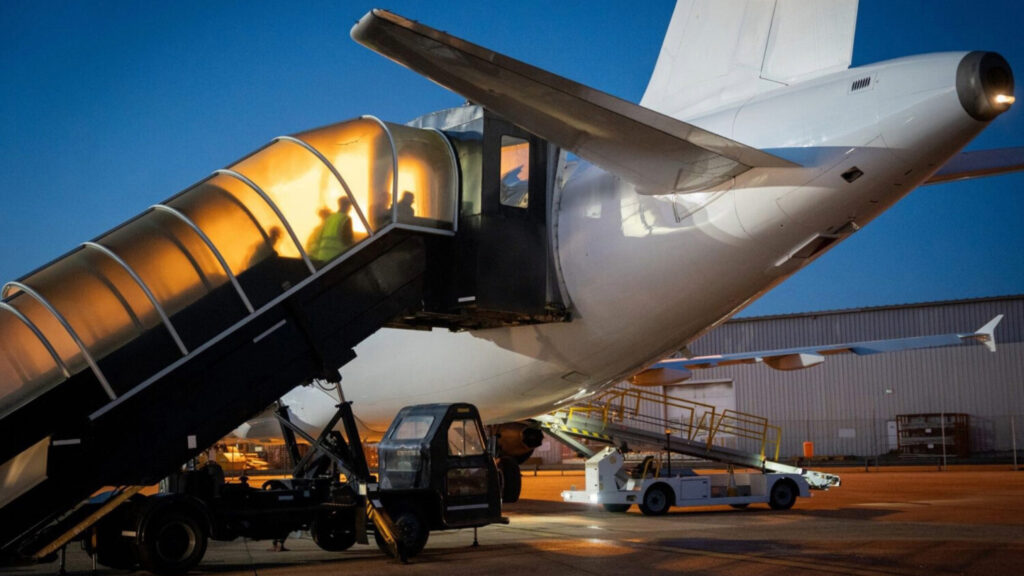Article 4: Poland, Estonia and American Retrenchment
NATO’s eastern flank has recently experienced an air of animosity. Within ten days, both the Polish and Estonian state respectively requested consultations under Article 4 of the North Atlantic Treaty, first after a Russian drone incursion into Polish airspace on the 10th September, then after three Russian MiG-31s violated Estonian airspace for roughly 12 minutes on the 19th September. These incidents coincide with signs that Washington intends to scale back or halt parts of its security assistance to the Baltics and other allies bordering Russia, raising questions about deterrence credibility precisely as Russia probes the alliance’s thresholds.
On 10 September, Poland invoked NATO Article 4 after several Russian drones crossed into its airspace during overnight strikes on Ukraine. Article 4 is triggered when a member state deems its “territorial integrity, political independence, or security” is under threat, obliging consultations among allies. According to Warsaw, more than twenty drones strayed across the Polish border and debris from those drones had landed inside their territory, with some fragments striking farmland and damaging infrastructure. While no casualties were reported, the symbolism appeared stark: NATO’s eastern flank had been directly penetrated by hardware tied to Russia’s ongoing war effort.
Considering the present conjuncture of the Russian-Ukraine war, where the Russian state has intensified its aerial campaign, directing its destructive force against Ukrainian energy and logistic hubs, particularly around Lviv and Volyn; regions that border Poland. These western Ukrainian territories have become vital arteries for the material supplied by NATO powers: weaponry, humanitarian shipments and fuel corridors. As Russian strikes push westward, the risk of overspill into Polish land appears more acute. Warsaw has long warned that Moscow’s strategy carries inherent escalation risks for NATO member states bordering Ukraine.
Poland’s decision to invoke Article 4 reflects this accumulated pressure. It was not the first time Polish territory has been struck during the war, missiles and debris landed inside its borders in 2022 and 2023, but the scale and repetition of drone incursions in 2025 signalled a dangerous pattern. Estonian officials backed Warsaw immediately, framing the drones as part of Moscow’s broader campaign to intimidate NATO’s frontier states. In Brussels, NATO Secretary General Jens Stoltenberg condemned the violations, convening urgent consultations, and reaffirmed that “every inch of Allied territory will be defended.”
These events naturally and directly interact with the trajectory of the Ukrainian war. As Kyiv faces attritional strain, manpower shortages, critical infrastructure under attack and wavering American support, Poland has become one of its most vocal advocates by supplying tanks, artillery, hosting millions of refugees and pushing both Washington and Brussels toward stronger guarantees of Ukraine’s future NATO membership.
Just nine days later, on 19 September, Estonia recorded an airspace violation. Three Russian MiG-31s entered Estonian airspace near Vaindloo Island, flying without flight plans, their transponders off, and no communication with air traffic control. The jets remained in Estonian skies for approximately twelve minutes, covering a five nautical mile penetration before being intercepted by Italian F-35s on Baltic Air Policing duty.
Immediately after, Tallinn released a flight-path depiction, summoned the Russian envoy, and requested Article 4 consultations. Moscow swiftly denied the violation and insisted its aircraft remained over neutral waters enroute to Kaliningrad. Yet Estonian officials stressed the gravity: this was not a fleeting border brush bust a sustained incursion of unusual length and composition. This has been the fourth such incident for Estonia in 2025, suggesting a pattern of calibrated grey-zone pressure. Each violation probes whether NATO will respond with visible reinforcement or whether such actions are absorbed as routine, normalising the Russian transgressions.
The Policy Shock: American Retrenchment
Compounding these provocations, reports surfaced that the Pentagon intends to wind down or halt several Baltic-facing security programmes, including the Baltic Security Initiative and elements of the Section 333 train-and-equip fund. These programmes have underwritten much of NATO’s eastern flanks’ recent military modernisation, funding HIMARS enablers, ISR platforms, special forces training, munitions stockpiles and critical infrastructure upgrades. Their prospective suspension may not merely be an accounting choice but that of a strategic signal with immediate consequences for deterrence credibility.
For these frontline capitals, already under strain from drone spill over, fighter incursions, and rising alert cycles, the timing could hardly be worse. Estonia, Latvia, and Lithuania have each lodged direct appeals to the United States Congress, primarily through direct outreach to members of the Senate Armed Services Committee (SASC), the House Armed Services Committee (HASC), as well as key appropriators on the Senate Appropriations Committee (Defence Subcommittee) and the House Appropriations Committee; urging legislators to shield it from executive discretion. This lobbying campaign has found sympathetic ears. Senior lawmakers from both parties, including those of the Republican party who typically have aligned with Trump’s White House, have criticised the prospective cuts as strategically incoherent at precisely the moment Russia is escalating its grey-zone operations.
This highlights a deeper inconsistency in the Trump administration’s approach to the Ukraine war and NATO’s eastern security. On one hand, President Trump has repeatedly emphasised the need for European burden-sharing and framed reductions in US outlays as a corrective to what the administration has described as “decades of free-riding.” On the other, his administration has leaned on NATO’s eastern members to carry much of the political and logistical burden of supporting Ukraine; hosting refugees, transferring tanks and artillery, and serving as critical conduits for Western aid. This dual posture leaves the frontline states simultaneously more exposed and less reassured, creating structural anxieties about the reliability of US guarantees, considering their alignments to Ukraine before the war as a strategic anti-Russian device.
Such contradictions have been visible in President Trump’s rhetoric on Ukraine itself. At times, he has claimed credit for authorising lethal assistance in his first term, presenting himself as more hawkish than the Obama administration. At other moments, he has openly questioned the scale of US commitments, hinting at possible accommodation with Moscow and urging Kyiv to negotiate – and at once a briefly mentioned future of Ukraine being in a similar political condition akin to the West Bank. These oscillations between resolve and retrenchment have complicated the alliance’s signalling to the Russian state. They allow Moscow to gamble that deterrence is conditional, shifting with US domestic cycles, rather than absolute. This is further calibrated by the fact that the US Supreme Court has allowed the Trump administration to freeze the $4 billion allocated by Congress for foreign aid while President Zelensky and President Trump held a meeting alongside the United Nations General Assembly, whereby the US Government under both Biden and Trump has refused Kyiv’s request to provide Tomahawk missiles.
Simply: deterrence is not a static inventory of weapons, but a composite of capability and intent. An American signal of cuts during an Article 4 consultation is to erode confidence in NATO’s collective will at the very moment when Russia probes its boundaries with drones and fighters. For Moscow, this ambiguity appears exploitable – encouraging the belief that alliance resolve is fungible at the margins and subject to changing political tides and bargaining in Washington and therefore less certain as a deterrent.
The dual invocation of Article 4 by both Poland and Estonia in September 2025 represents more than isolated provocations. Together they become a stress test of NATO’s deterrence capabilities; occurring precisely as Washington contemplates reducing support to those very allies. NATO’s frontier is no longer insulated from Russia’s war on Ukraine, but increasingly drawn into its orbit. That these provocations coincide with American debates over retrenchment only compounds strategic uncertainty.
The ever present future of the alliance’s confidence will be decisively tested in the coming months, not only in Ukraine’s trenches and skies, but in whether NATO demonstrates its security guarantees. If Washington signals ambivalence while Moscow probes, the deterrent shield risks being perceived as porous.



